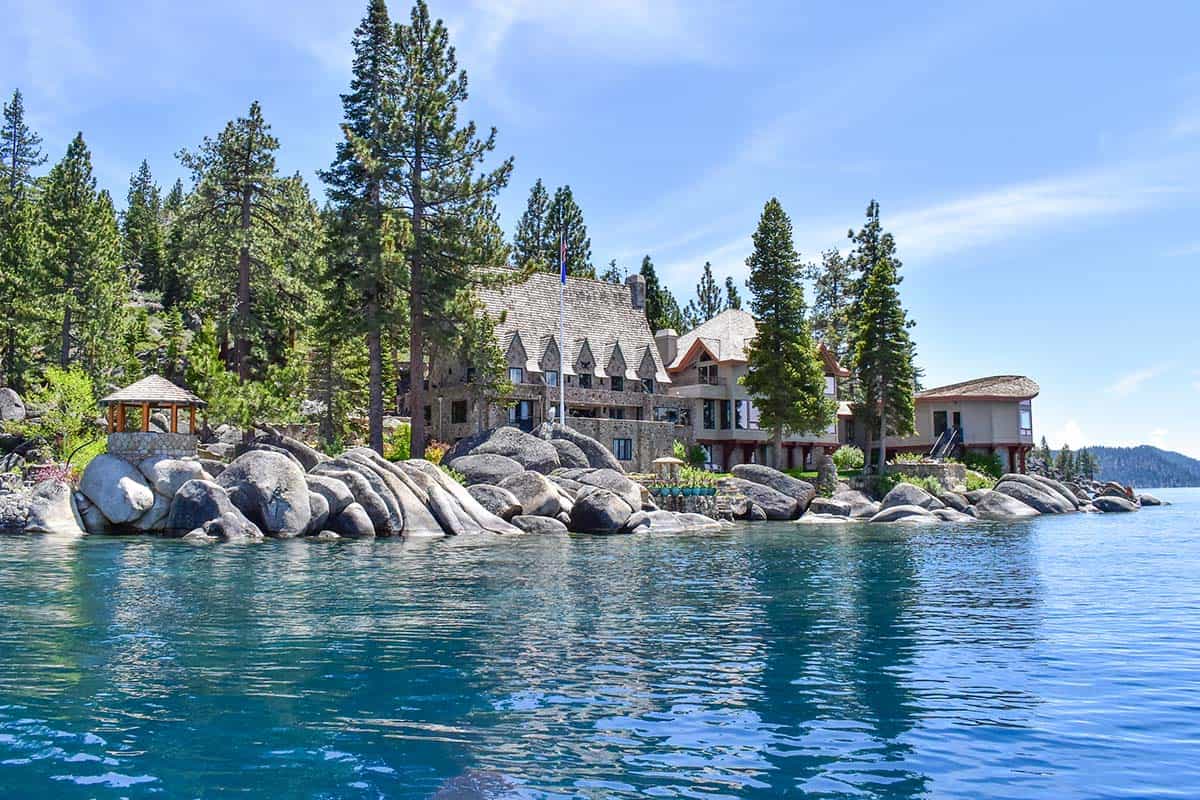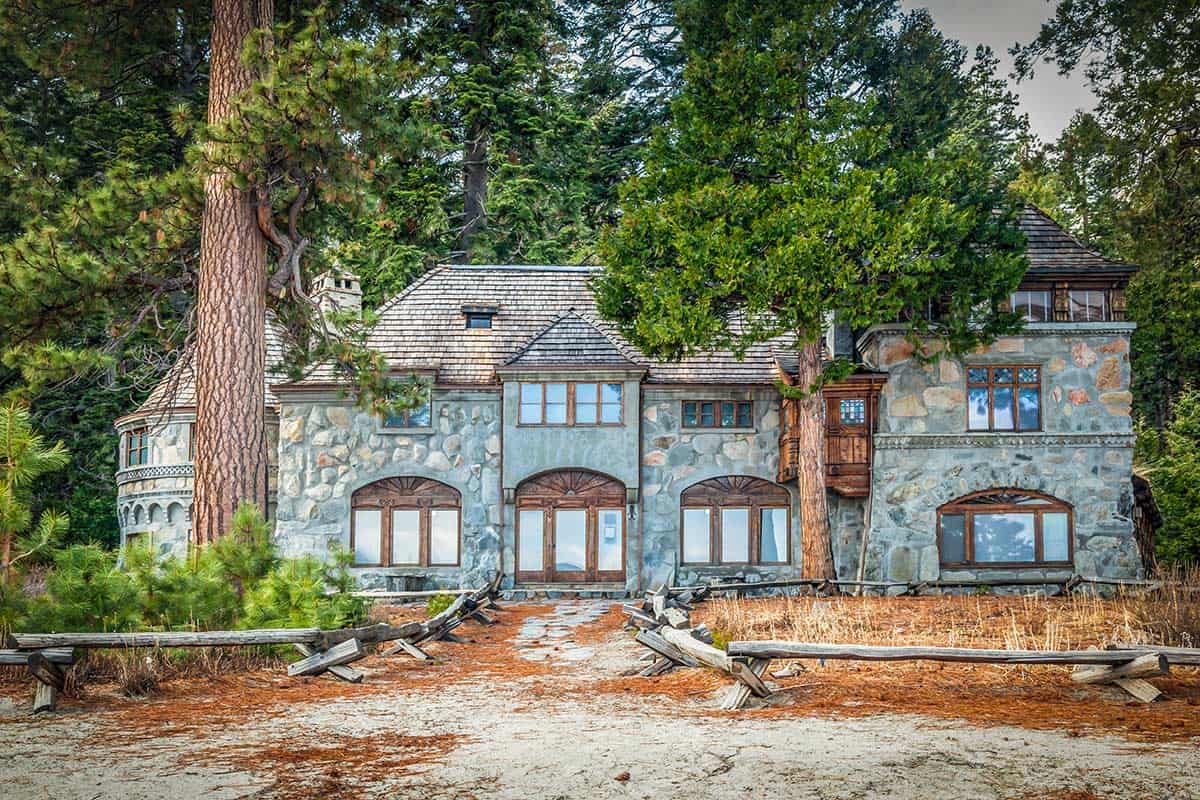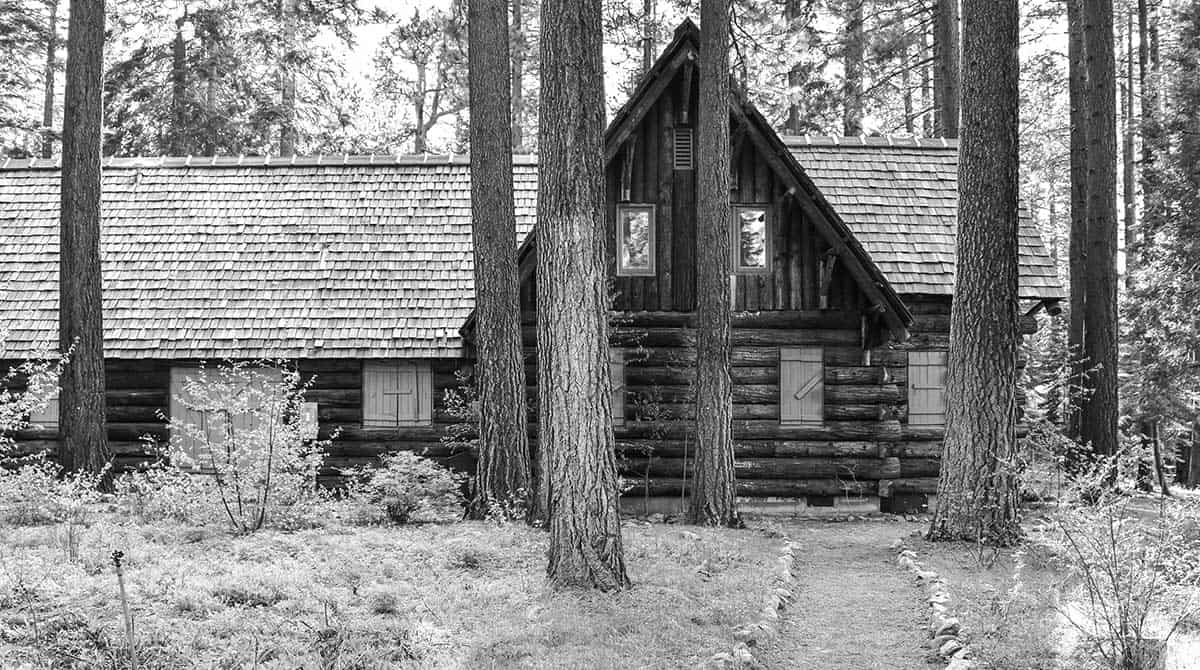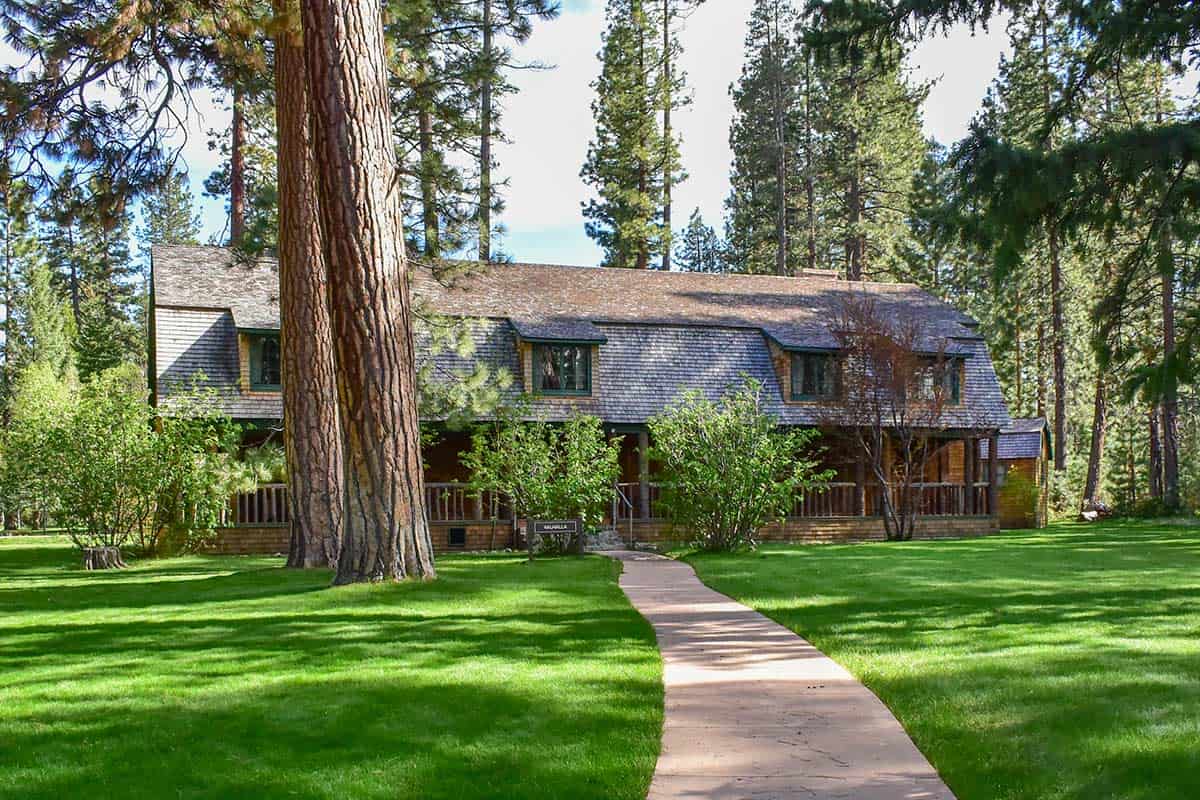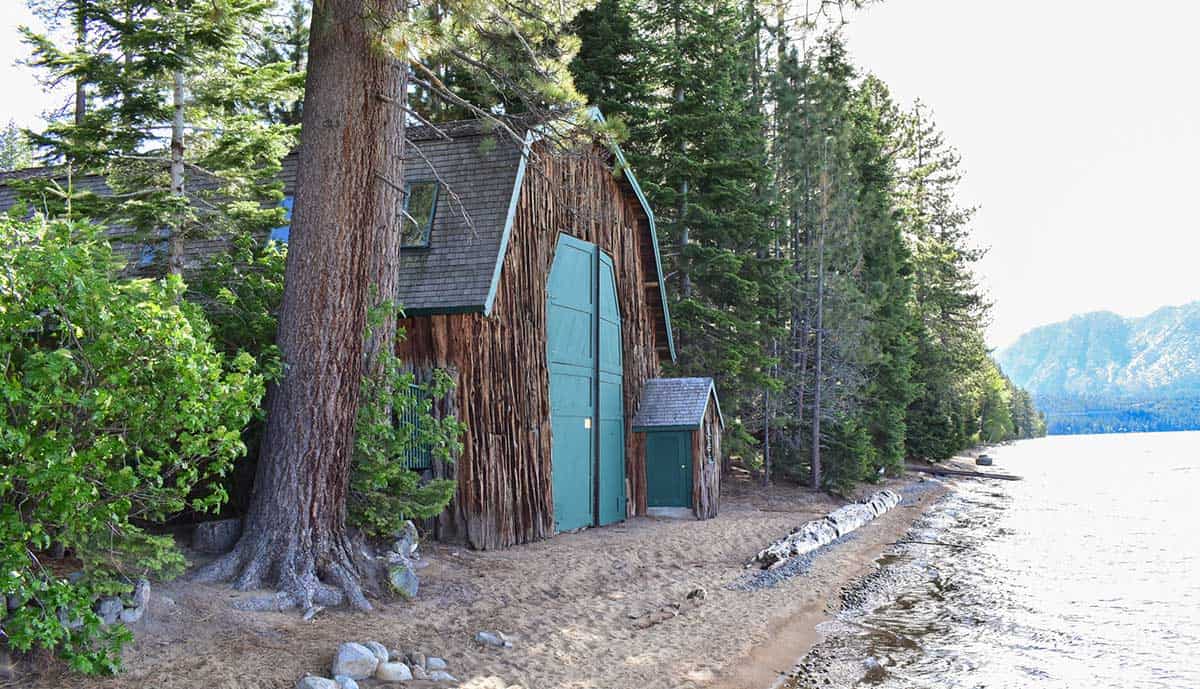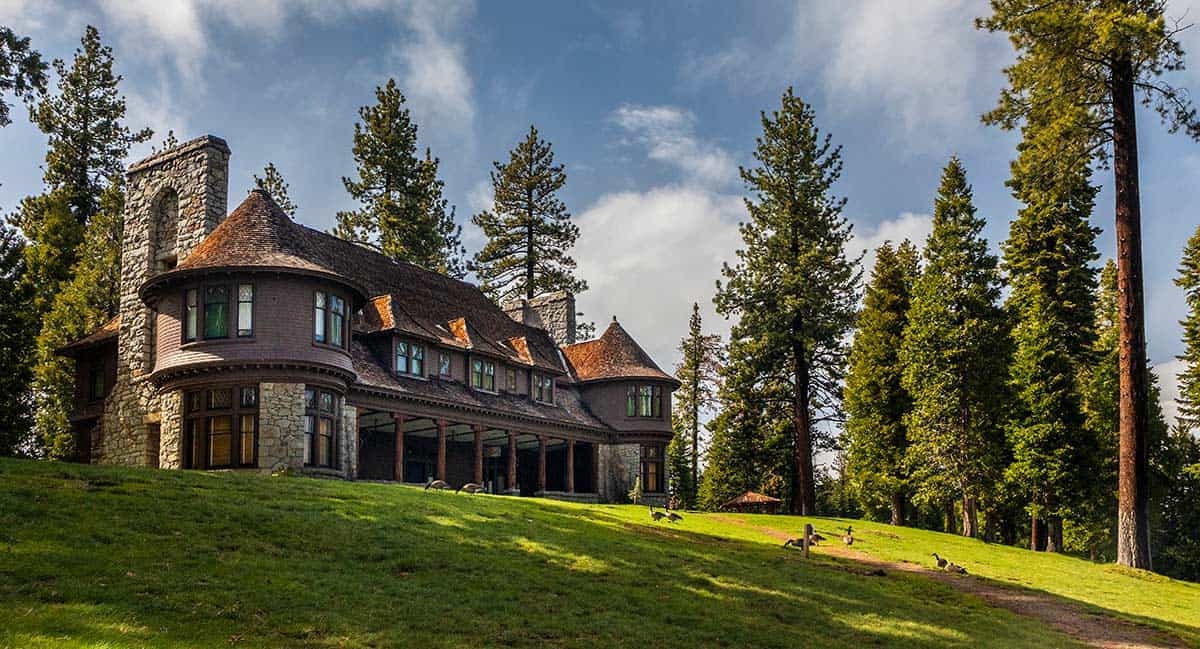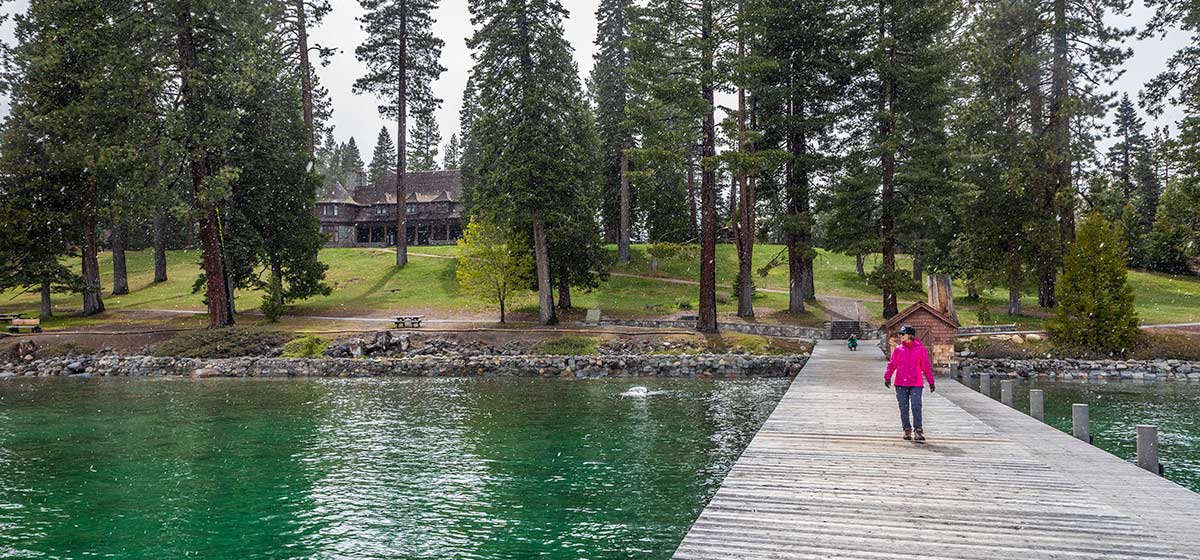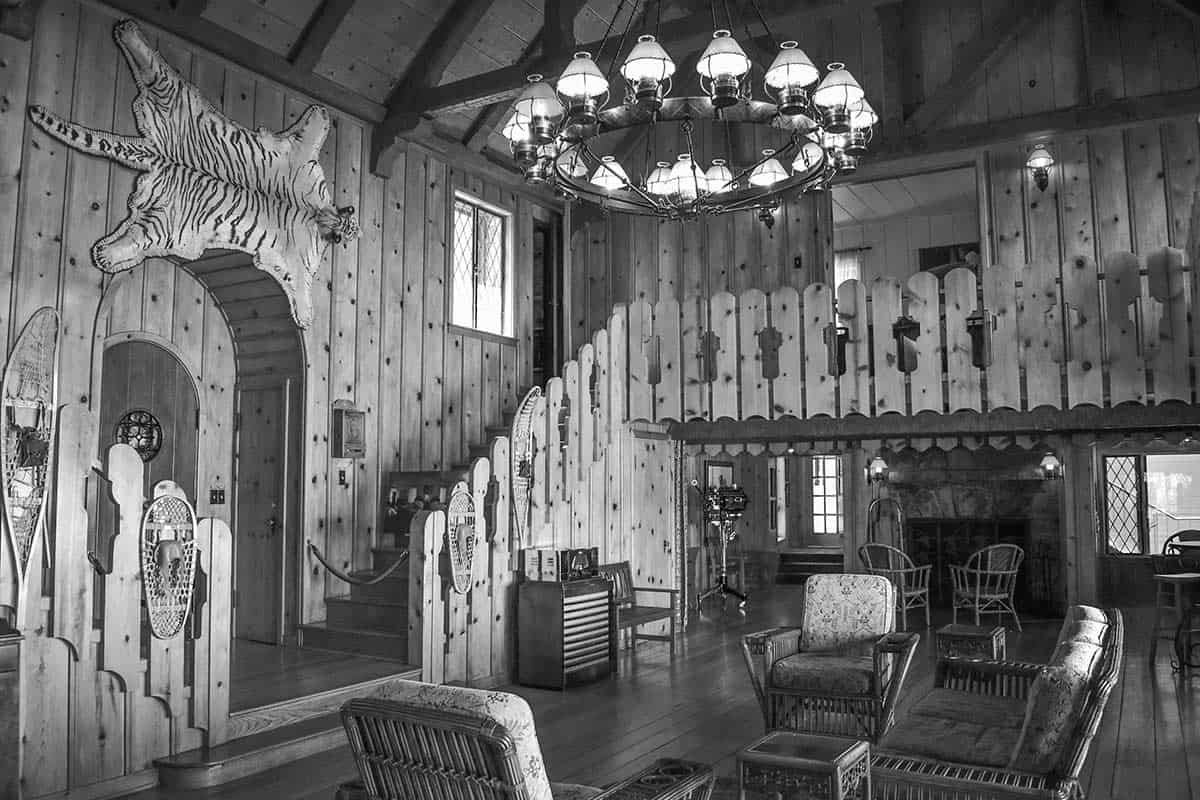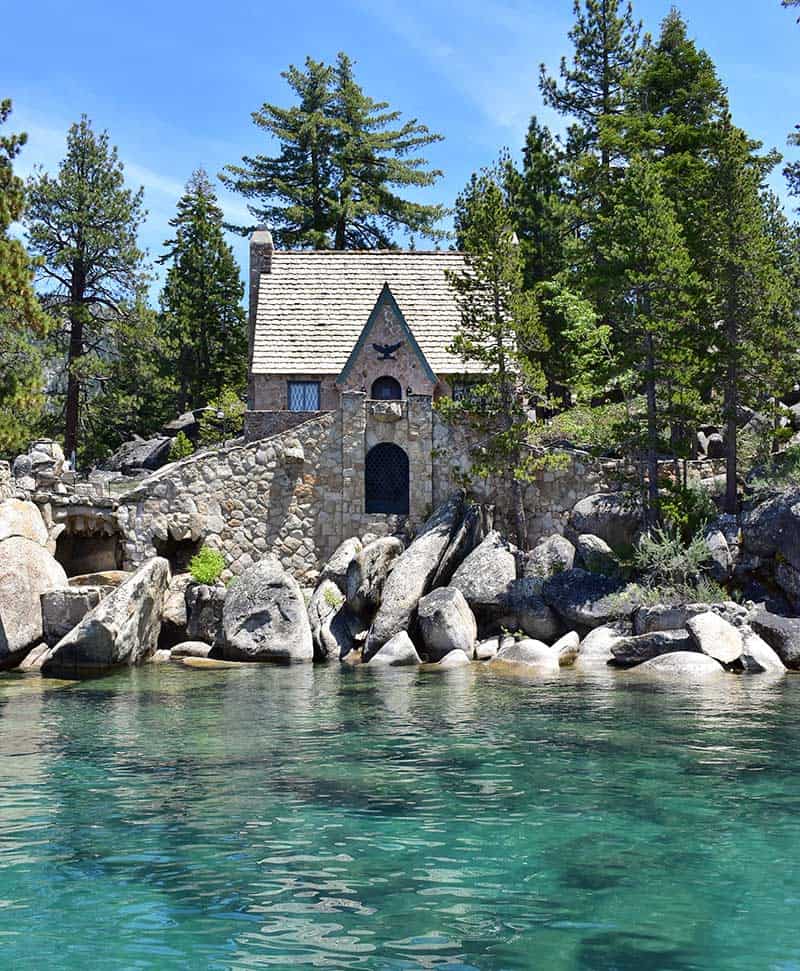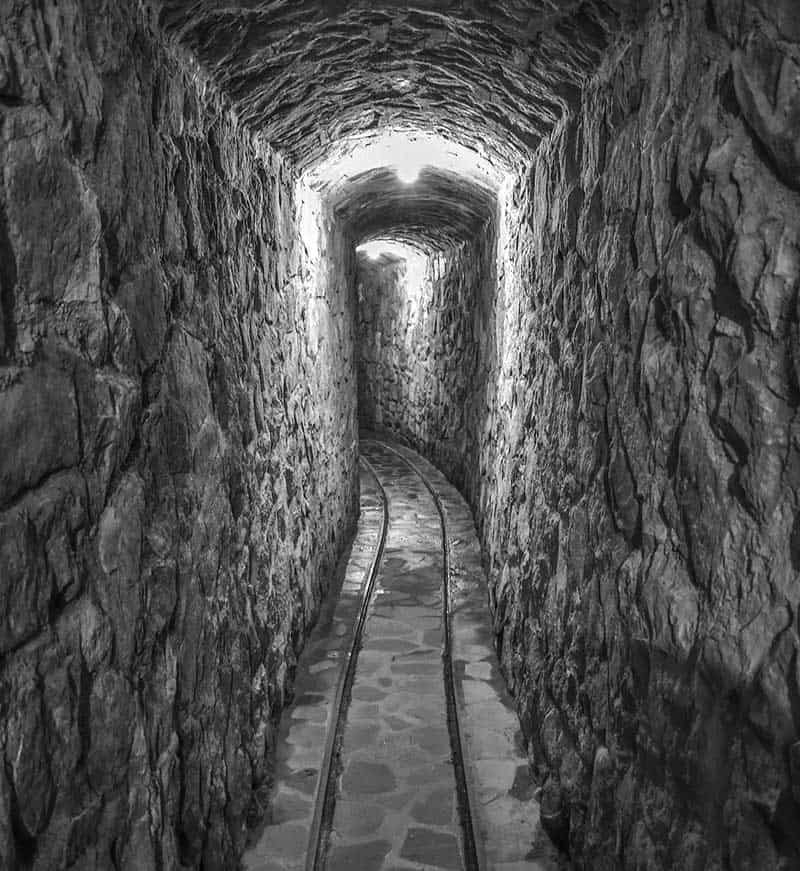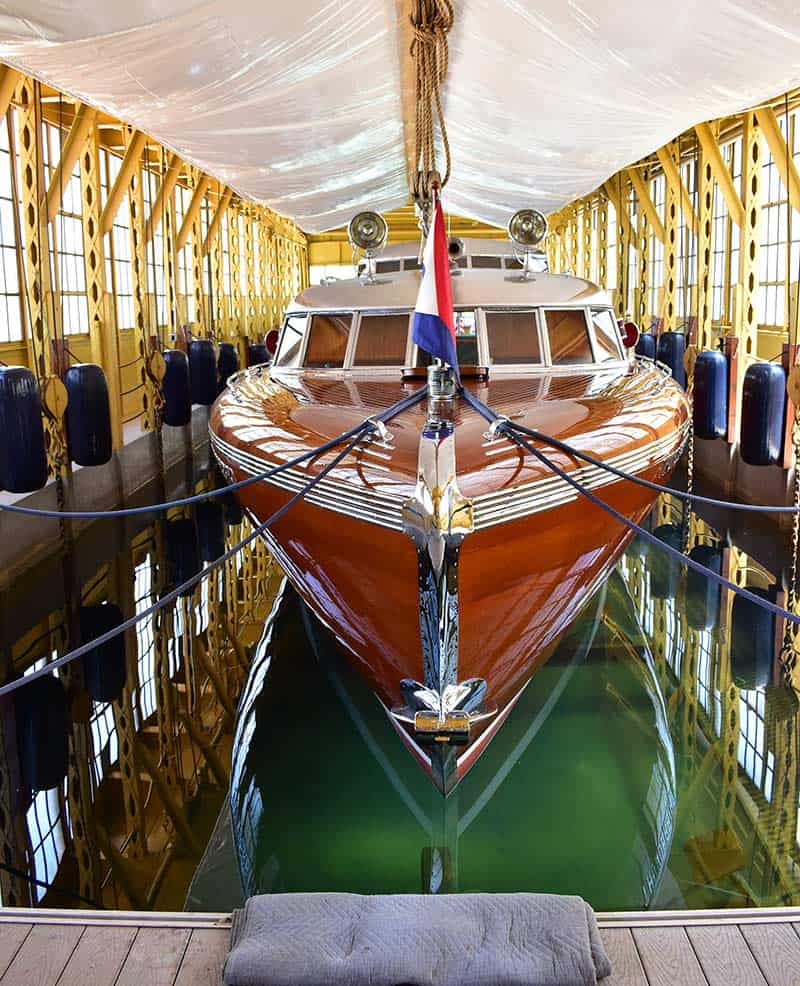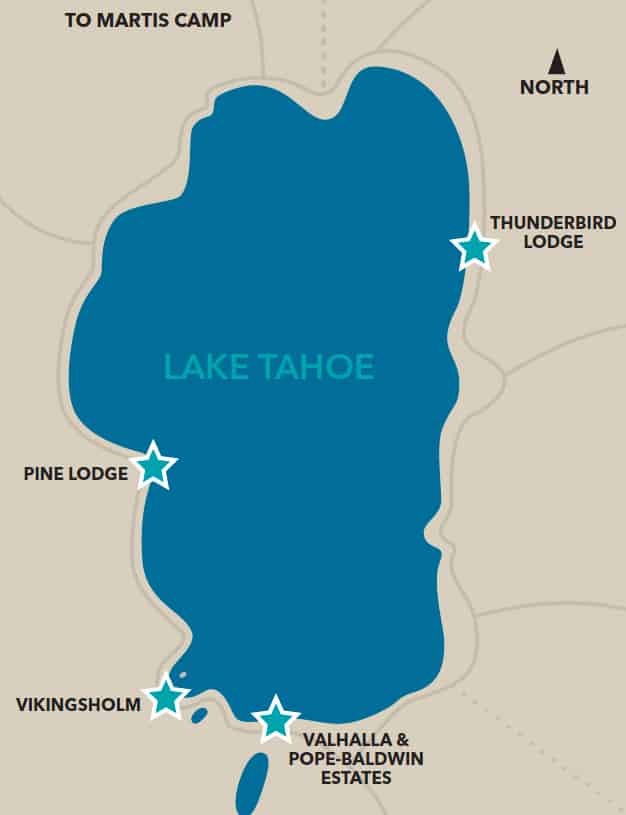For more than a century, people from all over the world have journeyed to Lake Tahoe to retreat, escape for the summer and relax in nature. The area’s historic estates and characters of years gone by show the timeless appeal of being at home in the Sierra.
Ask anyone who has spent a summer afternoon at Lake Tahoe and they’ll likely recall hearing the breeze in the treetops, smelling the fresh scent of pine mixed with the sweetness of sap, and gazing at the deep blue water which rests at the center of every view around the basin. This unique ambiance has endured beyond eras and industries as a motivating force for spending time in the region. Attracted by the setting and captivated by the beauty, most who venture here wish to stay longer and yearn to return again. Maybe you know the feeling? Every summer day here takes you deeper into relaxation, at some point prompting the question:
Why not make this home?
The sentiment is no different now than it was a century ago. Renowned residents Lora, Walter, Claire, George, Edith, Lucky, Dextra, Isaias, Florence, Sidney and George Jr. had the very same love for Lake Tahoe, leading them to build their homes, enjoy life in the Sierra and leave behind their legacies which carry on today.
Vikingsholm – 1929
By the time Lora Josephine Knight commissioned Vikingsholm in 1928, she was a widow, divorcée, world traveler and homeowner at Dollar Point on Lake Tahoe’s north shore. After summering on the point for 15 years, she purchased 239 acres in Emerald Bay and hired her nephew, Swedish architect Lennart Palme, to design her next home. Feeling the steep landscape of Emerald Bay was similar to the fjords of Scandinavia, Lora sought to incorporate architectural elements characteristic of the northern European region including granite masonry, hand-hewn timbers, woodcarvings and a sod roof. The home’s hexagonal plan with central courtyard was inspired by Swedish farmstead design. She carried the theme through the interior design as well with painted motifs and antique furnishings from Scandinavia, which remain in the home today.
Completed in 1929, Vikingsholm was Lora’s dream come true – a place to entertain, host family and friends for extended stays, and enjoy a relaxed and elegant life in Lake Tahoe for all the summers until her passing in 1945.
FANNETTE ISLAND TEA HOUSE
When visiting Vikingsholm, look for Lora’s tea house at the topof Fannette Island – the only island of Lake Tahoe, located in Emerald Bay. The 16-foot-square stone structure was built in 1930 and used to serve the occasional cuppa in the afternoon.
The Pope and Baldwin Estates – 1921
Together with Valhalla, the Pope and Baldwin estates create the Tallac Historic Site spanning one mile of shoreline in South Lake Tahoe. A few of the cabins date to the late 1800s, left behind from an early era of hotel and estate development. With arrival by car impossible until around 1913, most visitors to the area at the time arrived by boat or steamship on Lake Tahoe.
The Pope estate was built by George Tallant, a San Francisco banker and avid fisherman for whom the Tallant Lakes near Rubicon Bay are named. Tallant sold the property to Lloyd Tevis who passed away during escrow, leaving his son William as inheritor of the property. In 1923, William sold the property yet again to George Pope and Edith Taylor Pope, who humorously called the property Vatican Lodge. Both loved Lake Tahoe and eventually passed their estate into the care of the U.S. Forest Service for future generations to enjoy.
Next door, the Baldwin Estate was the original site of Lucky Baldwin’s Tallac Resort. Lucky’s renowned fortune in business started at the height of the gold rush in the 1850s and financed his foray into hotel development, land speculation and horse racing. More modest than neighboring properties, the Baldwin home was built in 1921 by Lucky’s granddaughter, Dextra.
RUSTIC ELEGANCE
Built later than the Pope Estate, the Baldwin home was designed in keeping with the overall site’s architectural characteristics including steep gables, hand-hewn logs and exposed beam ends. According to the 1987 nomination form submitted to the National Register of Historic Places, “… as much as the wealthy cherished their rustic hideaways, they refused to abandon comfort to enjoy them. Their demand for comfortable rusticity accounts to some degree for the sophistication and ‘finished’ quality of their rural dwellings – ‘elegantly rustic’ dwellings insulated them to a certain degree from the sometimes brutal wilderness qualities of the site.”
VALHALLA – The Heller Estate – 1924
Back in the day, perhaps the most curious fact about the Heller Estate was its joint ownership between Walter and Claire Heller. Walter, an investment broker from San Francisco, and Claire, a student at Stanford, married in 1919. Their mutual love of Lake Tahoe led them to purchase the property and build the main house (Grand Hall) in 1924. Yet when Claire and Walter divorced in 1936, they continued to share use of the estate through an amicable agreement that lasted nearly two decades. Shortly before Walter’s death in 1956, Claire sold the property, which was later acquired by the U.S. Forest Service in 1971.
Valhalla, Claire and Walter’s name for the estate, means “heavenly place” in Norse mythology. Its setting on the south shore of Lake Tahoe certainly feels heavenly with its mature pines and verdant lawn extending between the Shingle-style home and the shoreline. A massive two-story stone fireplace anchors the east wall of the vaulted great room which opens to a veranda, creating a grand and welcoming space for social gatherings.
THE BOATHOUSE
Clad in cedar bark with an open interior, the boathouse was part of the Hellers’ property purchase from George Pope in the 1920s. It has since been refurbished and is now used as a theater with the north windows looking out to Lake Tahoe as a magnificent backdrop to musical and theatrical performances.
PINE LODGE – The Hellman-Ehrman Mansion – 1903
On the west shore of Lake Tahoe, between the idyllic beach of Meek’s Bay and the outflow of General Creek, the Hellman-Ehrman mansion sits on a gently sloped hill. The deep back patio of the two-story residence faces east, welcoming the morning sun and filtered lake view through tall pines and cedars along the shore. Appropriately named Pine Lodge, the home was completed in 1903 by Isaias Wolf Hellman, who purchased 2,000 acres around Sugar Pine Point. Isaias, an immigrant from Bavaria, built his fortune through banking, eventually merging Nevada Bank with Wells Fargo in the early 1900s. His additional investments in land, railroads and utilities made him one of the most wealthy entrepreneurs on the Pacific Coast.
Florence, the youngest child of Isaias and his wife Esther, inherited Pine Lodge upon Isaias’s death in 1920. She and her husband Sidney Ehrman, partner of law firm Heller Powers & Ehrman, enjoyed Pine Lodge as a getaway from their home in San Francisco. The lodge was equipped with coveted modern conveniences of the time – electricity and indoor plumbing – with heating from two fireplaces. Eight bedrooms accommodated the family and their guests, and a separate wing housed the more than two dozen staff members employed by the home.
For Florence and Sidney, Pine Lodge was the center of their summer recreation with days spent playing games on the lawn, swimming, boating and fishing from the pier for Lahontan cutthroat trout. In 1965, after Florence’s death, California State Parks acquired the property which is now known as Sugar Pine Point State Park and the Hellman-Ehrman Mansion.
MORE NOTES ON HISTORY
“The super structure has turreted bays and decorative exterior treatment, although the general feeling is one of simplicity, spaciousness and solidarity.”
THE MANSION
As noted in the 1972 nomination form submitted to the National Register of Historic Places, “A sumptuous summer home, subsequently to be known as ‘The Mansion,’ was completed for the Hellmans in 1903. By 1913, the Hellman Estate, with its large gabled and turreted mansion, its outlying servants quarters, tennis court, boathouse, water tower, carriage house, ice house, and accessory structures, became noted as the finest private estate in the High Sierra.”
THUNDERBIRD LODGE – 1939
On the east edge of Lake Tahoe, Thunderbird Lodge hugs the rocky shoreline amid winding stone paths leading to the Boathouse, Card House and outlying buildings. This picturesque estate traces back to the fortunes of Hugh Whittell and Nicholas Luning, both of whom built their empires during the early days of the gold rush in California. Hugh’s son, George Whittell, and Nicholas’s daughter, Anna Luning, married in 1879 and later inherited the families’ accumulated wealth. This was eventually passed on to their son, George Whittell Jr., who grew up in San Francisco but fled the family’s high-society life for a few years of adventure with Barnum & Bailey Circus.
With a fondness for wild animals and extravagance, George lived an untamed lifestyle resulting in two failed marriages. His financial life was far more successful with the inheritance from his family and a timely divestment of his stock portfolio just prior to the market crash of 1929. He collected Deusenbergs, flew airplanes and commissioned a private yacht. He owned an estate in Woodside and later purchased 40,000 acres on the east shore of Lake Tahoe where in 1939 he built Thunderbird Lodge as his summer retreat.
George’s third wife, French socialite Elia Pascal, preferred life in Paris over rustic Lake Tahoe, often leaving George to spend his summers alone. He hosted wild parties and poker nights, and kept himself company with his pet lion named Bill. Yet as time went on, George retreated from public life, preferring the privacy and seclusion of the Thunderbird estate.
It may have been Lake Tahoe itself that finally tamed George, with its quiet solitude unlike anywhere else. Ultimately George chose to conserve the land he had once intended to develop and spent his last years enjoying the panoramic view from his home. After his death in 1969, the estate eventually entered into the care of Thunderbird Lodge Preservation Society and remains today as a museum and 20-mile stretch of scenic protected shoreline.
THUNDERBIRD TUNNEL
Extending 600 feet, the tunnel under Thunderbird Lodge allowed George to move undetected between the main home and the boathouse.
THE THUNDERBIRD YACHT
Lake Tahoe’s most historic watercraft, the Thunderbird Yacht, is docked in the boathouse year-round, emerging only for special events. Commissioned by Whittell in 1939, its heavily varnished mahogany hull gleams with perfection and plows through the water with the power of two V-12 airplane engines.
LAKE TAHOE’S Historic Estates
All of the estates featured may be visited throughout the summer, although most are currently closed until California and Nevada progress to further stages of reopening. Check the websites for the latest details. When open, pack a picnic and enjoy the drive around Lake Tahoe. The history, views and indelible sense of calm and relaxation found at these estates make the journey one to remember.
thunderbirdtahoe.org
sierrastateparks.org
vikingsholm.com
tahoeheritage.org
valhallatahoe.com

